A bit of personal history today.
I grew up by the North Sea. It’s a cruel one, known for its cold, treacherous waters and its storm tides. It watches you, from Thule and the narrow fjords in the north, all the way down to those low English coastlines being dragged back into the deeps with every tide.
“The northern Ocean, it seemed to the Romans, stood at a forbidding remove from everything that made life bearable: sunshine, wine, olive oil. Its slate-grey waters, icy and teeming with monsters, marked the boundaries of the world itself”. (writer Tom Holland)
The North Sea strand reeks of fishing-boats and longships, storm-tossed kelp and bladderwrack. It is littered with the dead and the abandoned. And it defines you as a child, gives you a mythology from which to start a long journey into fantasy literature, horror and anything basically weird. It’s a repository of the strange, from the Danes driving their ships into Yorkshire rivermouths to the far-off threat of finfolk from the Orkneys and Shetlands.
My great-grandfather was master of a Hull packet, taking passenger and mail ships up the Humber or out to the Belgian and Dutch ports. I still have his captain’s chair. His wife smuggled tobacco in pouches sewn inside her crinoline dress. They say that the custom-officers would smile and help her off the ship before they checked elsewhere for contraband.
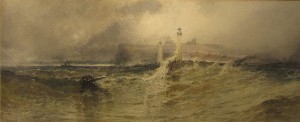
My father was a lighthouse keeper, mostly at Flamborough or Longstone Rock. The two lighthouses couldn’t be more different. The first is on the headland, easily accessible by road. He could do a shift and drive home – when you could see the road.
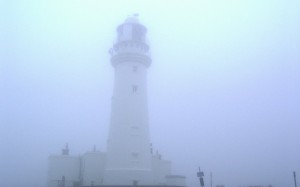
The second is in the North Sea on one of the Outer Farne Islands. At Longstone the waves could overwhelm the living quarters and drive the keepers into the upper tower, hoping their supplies would hold out. The regime there was a month on, a month off – thirty days stuck on Longstone Rock with one other man for company. As he loved the sea, it didn’t bother my father at all.

It was a good start to life for me. That coast is famous for its fishing cobles, clinker-built like longships from oak and larch, high-bowed to deal with the rough seas and flat-bottomed so they can be dragged up the landings in the coves. Small ships going a-viking with every high tide.
The coble-men traditionally wore ganseys (probably a corruption of the word guernsey), garments made with tightly-spun wool and closely knitted to turn water. Weatherproof, though not waterproof. It used to be said that each village had its own pattern so that if there were an accident at sea, the bodies could be sent back to the correct village. Thus there was a Staithes pattern, a Flamborough pattern and a Filey one. If the face was gone, no longer recognisable, then the gansey was witness as to who exactly had passed.
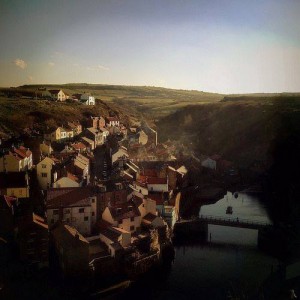
There was always that question when my father went away to the Farnes or the fishermen went out. Would they come back? The sound of the rescue helicopter was part of my childhood soundtrack, and because I was an impressionable pup, my favourite piece of verse was from Rudyard Kipling:
The Harp Song of the Dane Women
What is a woman that you forsake her,
And the hearth-fire and the home-acre,
To go with the old grey Widow-maker?
She has no house to lay a guest in —
But one chill bed for all to rest in,
That the pale suns and the stray bergs nest in.
She has no strong white arms to fold you,
But the ten-times-fingering weed to hold you —
Out on the rocks where the tide has rolled you.
The old grey Widow-maker. The North Sea. Also called the Whale-road, where leviathans as slatey-dark as the sea surged up to blow and peer at the thin sunlight.
For a different feel of the power in these words, try this performance by Sedayne, from Peter Bellamy‘s setting of the poem to music.
(Bellamy produced two albums, Oak Ash and Thorn and Merlyn’s Isle of Gramarye, based on Kipling’s verse from Puck of Pook’s Hill, a very evocative tale of early England, and Rewards and Fairies. Bellamy was a founder member of the Young Tradition folk group, but sadly committed suidice in 1991.)
And even if the sword-point and the waves missed you, you never knew about the finfolk. Remember them? We’re not talking pretty, long-haired mermaids here, or selkies. I don’t remember a single mermaid story from my youth, only suggestions of much darker things. Cold and fey, the finfolk dwell in their city of Finfolkaheem. Their boats are driven by sorcery, and they are a gloomy people, given to collecting silver and long grudges.
Sunken Finfolkaheem is their winter city, for when when the storms rage, and in these days it’s all that’s left to them. Once upon a time they rose from there in the summer and dwelled on the island of Eynhallow, but no more – it it said to have been taken from them in the end by Christians. As the Orcadian rhyme goes:
Eynhallow fair, Eynhallow free
Eynhallow sits in the middle o’ the sea
A roaring roost on every side,
Eynhallow sits in the middle o’ the tide.
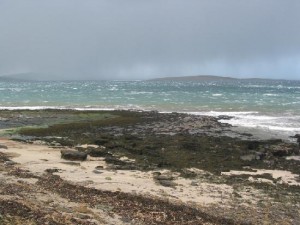
The finfolk don’t have massive fish tails to encumber them. They are masters of sea or land, able to live on both with ease, and sail better than any human. I say masters, because the finmen are dominant and cruel. Only the Gospel and the mark of the True Cross are certain to stop them. Humans are taken as slaves – finwifes are used for drudgery or to entrap further mortals. If a finwife can find no normal man to marry, she is forced into the service of a finman and degenerates into a hag, gnarled and ugly.
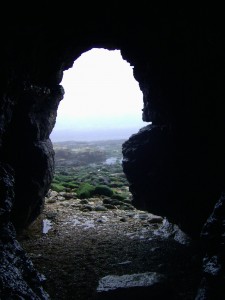
But back to home. There were stories all around in those days. The North York Moors behind us, and the sea before us. Flamborough Head is cut by a huge earthwork known as Dane’s Dyke, though it’s far earlier than the Danes, and God knows how so few people go over the cliffs. I’ve been there on days where it was impossible to see where the land stopped and a sheer drop began, mornings when the sea fret was so thick that you were lucky if your hands were visible. Caves have been eaten into the chalk of the headland, wondrous dripping caves in which your imagination can get quite lost.
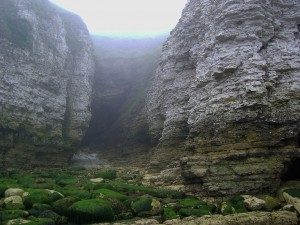
Out on the headland is an old chalk-pit, though some call it a well. It was here where a young woman called Jenny Gallows killed herself, throwing herself into its depths. It is said that if you run around it a certain number of times, her ghost will come to taunt and haunt you.
The most famous story surrounding Jenny tells of a farmer who rode around the well nine times on his horse. On the last round, the girl’s spirit appeared and chased him mercilessly to the village, biting a piece out of the horse’s flank and leaving a white patch that didn’t fade until the animal died. In other versions, eight circuits raises Jenny, but nine circuits brings the fey themselves to speak with you.
We even found a song about her by folk-singer David Swann:
Below the chalk headland, the tides have eroded the sweep of the coastline down to the Humber, and many villages lie under the sea now. Many, not just the odd one. Believe it or not, the following had all gone by the time Thomas Sheppard wrote his book The Lost Towns of the Yorkshire Coast, published in 1912:
Wilsthorpe, Auburn, Hartburn, Hyde, Withow, Cleton, Northorpe, Hornsea Burton, Hornsea Beck, Southorpe, Great Colden, Colden Parva, Old Aldborough, Ringborough, Monkwell, Monkwike, Sand-le-Mere, Waxhole, Owthorne by Sisterkirk, Newsome, Old Withernsea, Out Newton, Dimlington, Turmarr, Northorp, Hoton, Old Kilnsea, Ravenspurn, Ravenser Odd.
We still go to Auburn now and then, where a farm or two remains. We run the dogs on the sands, and stare out, wondering if anything lies down there under the lead-coloured waves.
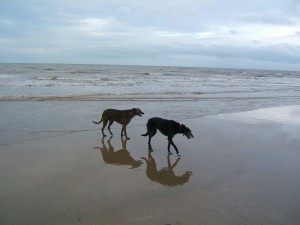
Flamborough Head and the village where I grew up lie within the Wold Newton Triangle. With its drowned villages, haunts, barrows, Ley Lines and the Gypsey Race river, which rises from dry earth to prophesy doom, the area has everything – and it points towards the North Sea.
A grand place to be a child.
####
Sigurd Towrie‘s site Orkneyjar has some more wonderful legends and tales from the north for those who want to know more:
We are the Lords of Trivia here, so for those of you wanting a book for the evening, it would be unfair not to point out that Whale Road is also the title of the first in a set of historical Viking novels by Robert Low. But we haven’t read it. So it’s up to you.
There are too many editions of Puck of Pook’s Hill to recommend a particular one, but if you are interested in English lore, it’s a fascinating read.
More Stranger Seas and lighthouses later in the month. On and around Valentines Day, we join up with sundry other writers for Anita Stewart’s Bad Love event on Facebook. Which means that we’d better write something quick. So we’ll see you on the fourteenth…
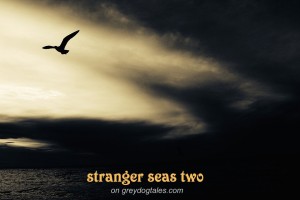
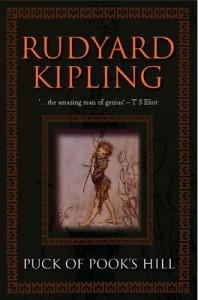
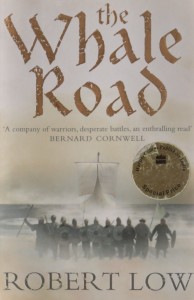
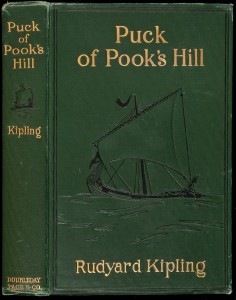
Lyrical, poetic, nostalgic, evocative. Damn, but you really made a beautiful thing, here. I’ll enjoy rereading it.
Thank you so much. I have to admit that, unlike many, I was lucky enough to have a rich childhood filled with history and tales like this. It certainly helped.